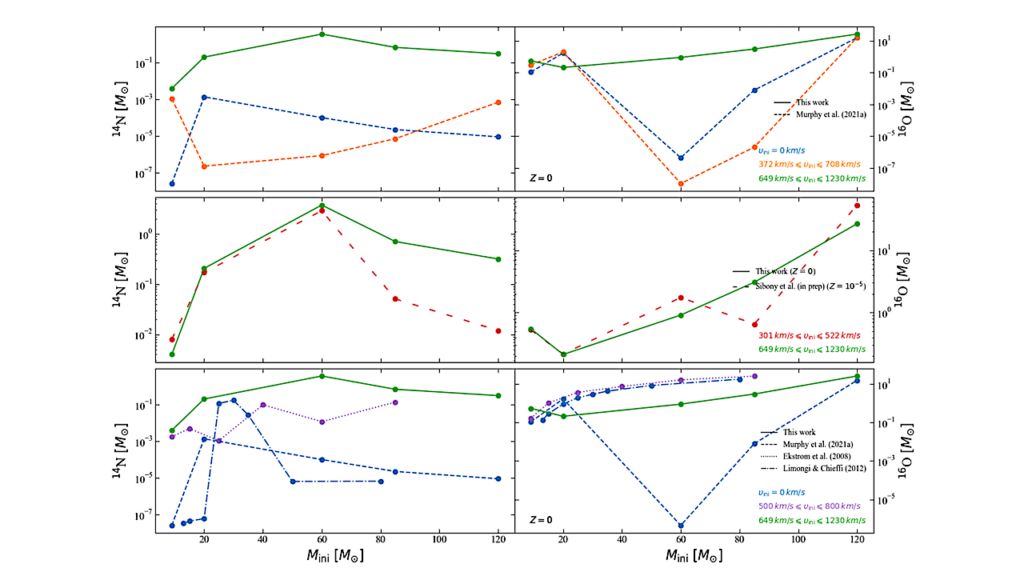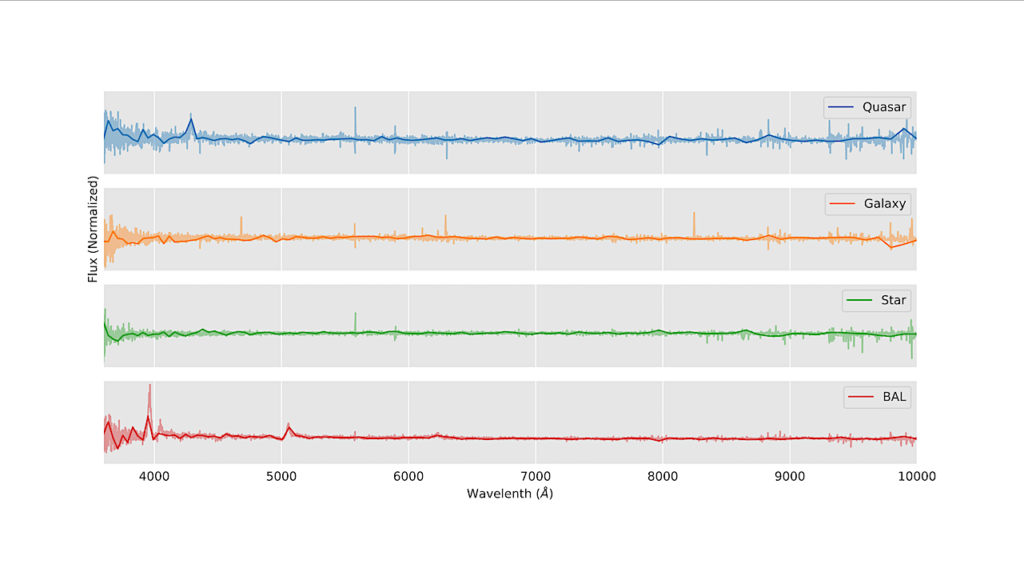Studying Habitability Of The Exoplanets Kepler-504 b, Kepler-315 b, And Kepler-315 c
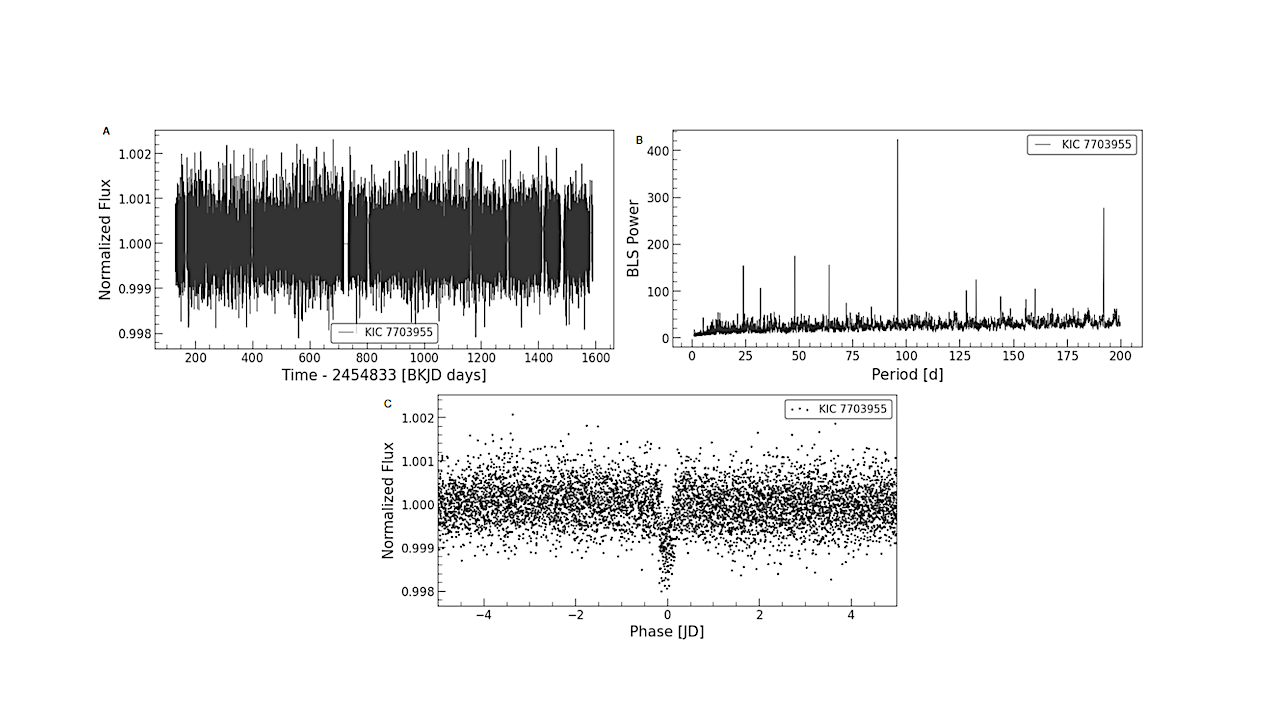
Astronomers have always wanted to know whether there are other planets around other stars that support life like our Earth. The search for life elsewhere has led us to new findings of extreme planetary conditions that humans were unaware of. Here we present the habitability index values of three earlier discovered exoplanets: Kepler-504 b (of the star Kepler-504), Kepler-315 b and Kepler-315 c (of the Kepler-315 stellar system).
We wanted to know what are the ideal factors that decide the chances of habitability, e.g., the orbital distance from the star, the type of star, or a combination of multiple properties. We hypothesized that there should exist a combination of these properties that will increase the chances that the exoplanet would be similar to Earth.
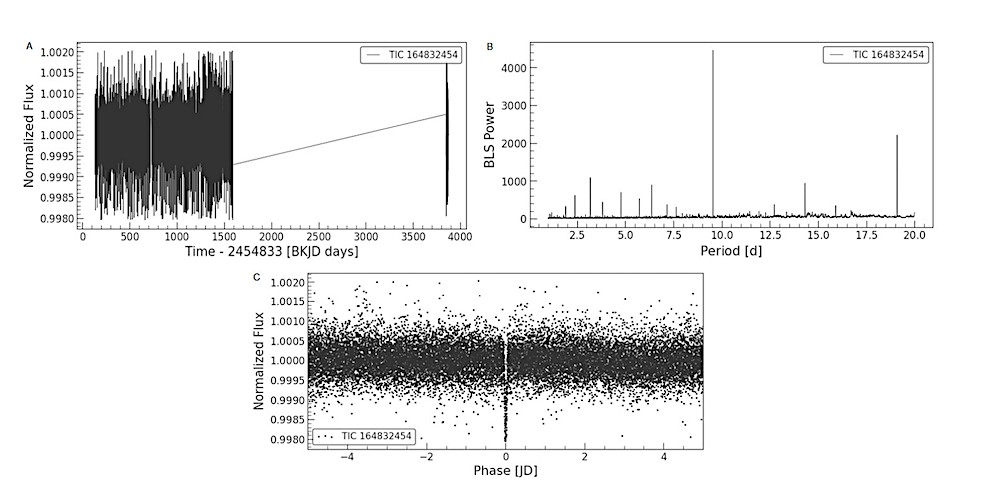
Kepler-504 b flux, orbital period, and transit flux. The sharp drop in observed flux of Kepler-504 shows how close the exoplanet Kepler-504 b is; its orbital period is only 9.5 days. (A) Graph of entire data of brightness (flux) of the star Kepler-504 over its whole observed time period. The gap in the time series data is due to two separate data sets. The first is from the Kepler Space Telescope, while the second data set is from TESS. (B) Orbital period of the planet using the BLS method. (C) The Transit Flux graph gives us the minimum flux value of planet Kepler-504 b, which helps us calculate its planetary properties and habitability. — astro-ph.EP
We have adopted the Earth Similarity Index (ESI) for calculating the physical similarity of exoplanets to Earth, and hence the probability of them being habitable. Using available telescope data, we found that Kepler-504 b, with a host M-type star (small red dwarf), and Kepler-315 c, with a host G-type star, had ESI values of 71.23% and 69.44%, respectively, thereby showing high similarity to Earth.
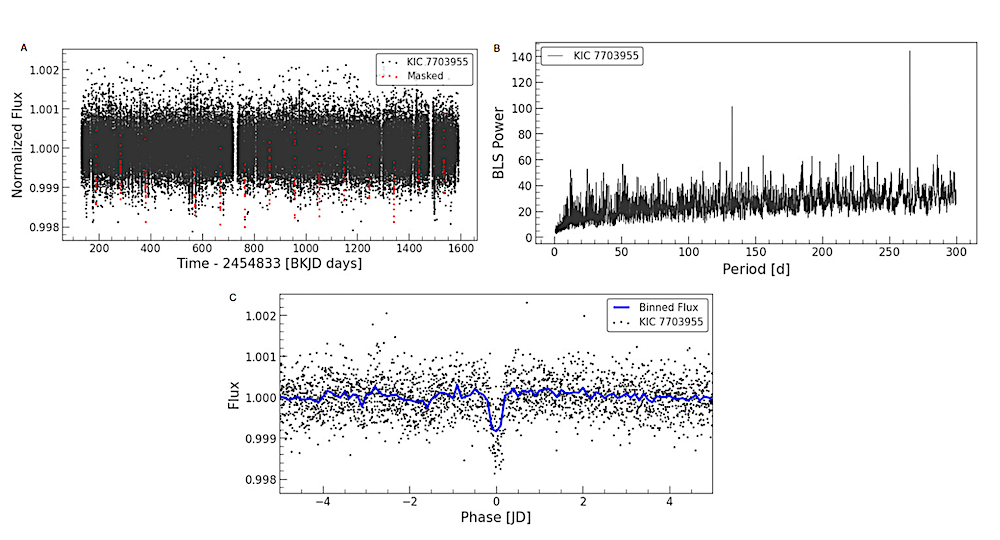
Kepler-315 c flux, orbital period, and transit flux. The slight flux drop while observing the star Kepler-315 shows the far away orbit of Kepler-315 c around it. (A) Brightness (flux) of the star over its whole observed time period. It is the same as Figure 1A except that Kepler-315 b data was masked (hidden) to calculate the orbital period for Kepler-315 c. (B) Orbital period of the planet using the BLS method. (C) The Transit Flux graph gives us the minimum flux value of planet Kepler-315 c which helps us calculate planetary properties and habitability. Flux was binned to show the transit curve we were looking for in case the curve was not prominent enough due to masking of data points. — astro-ph.EP
Kepler-315 b, with a host G-type star, on the other hand, had an ESI value of only 35.68%, showing poor similarity to Earth. We have also listed previously calculated ESI values of additional exoplanets from the Planet Habitability Laboratory catalog, which supports our hypothesis.
Thus, it suggests that a combination of star-type and orbital radius seems to make conditions favorable. Future work can study more exoplanets with such combinations to further validate these findings.
Sattik Bhaumik, Geetanjali Sethi
Subjects: Earth and Planetary Astrophysics (astro-ph.EP); Computational Physics (physics.comp-ph); Space Physics (physics.space-ph)
Cite as: arXiv:2401.06269 [astro-ph.EP] (or arXiv:2401.06269v1 [astro-ph.EP] for this version)
Journal reference: Journal of Emerging Investigators 5 (2022) 1-6
Related DOI:
https://doi.org/10.59720/22-033
Focus to learn more
Submission history
From: Sattik Bhaumik [view email]
[v1] Thu, 11 Jan 2024 21:48:54 UTC (1,101 KB)
https://arxiv.org/abs/2401.06269
Astrobiology,




